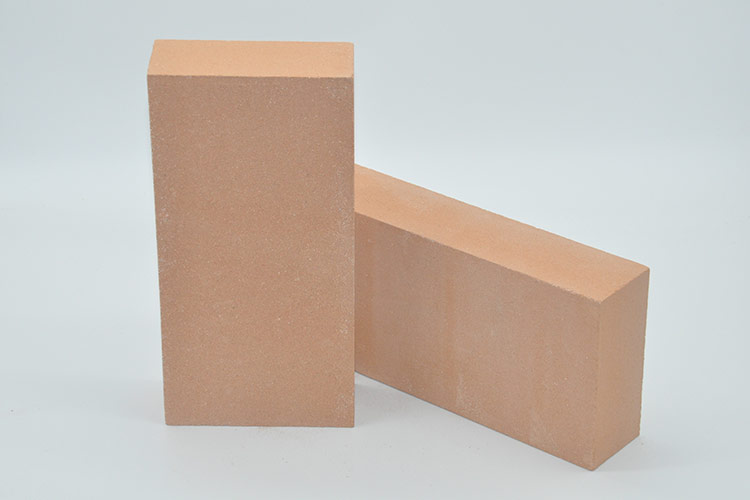
Refractory bricks are inorganic non-metallic materials with a refractoriness of not less than 1580°C. They are structural materials for masonry furnaces, eccetera.
Mattoni refrattari are inorganic non-metallic materials with refractories of not less than 1580°C. Sono i materiali di base per servire la tecnologia ad alta temperatura, I materiali strutturali per forni in muratura e altre attrezzature termiche, and the functional materials for manufacturing certain high-temperature containers and parts or playing special roles.
The successful use of refractory firebricks under the action of high temperature must have a good organizational structure, proprietà termiche, proprietà meccaniche, and use properties. That is a high degree of refractories, temperatura di rammollimento del carico, resistenza allo shock termico, e resistenza all'erosione chimica e altre proprietà. This can withstand a variety of physical and chemical changes to meet the requirements of the use of thermal equipment and components.
Then there is a question, refractory bricks can be high-temperature resistant? Why can’t other materials withstand high temperatures? PER refractory team will give you a detailed answer.
Refractory brick manufacturing raw materials are generally natural ores, come la bauxite, silice, magnesite, and other raw materials are processed and manufactured from different properties of refractory bricks, such as aluminum and silicon refractory bricks, mattoni refrattari di silice, and magnesia refractory bricks three types.
When bauxite is chosen as the raw material for the production of alumina-silica refractory bricks, its main component is alumina. It is hydrated alumina containing impurities, an earthy mineral, insoluble in water, soluble in sulfuric acid, and sodium hydroxide solution.
The main use is for aluminum refining, e produzione di materiali refrattari, perché i refrattari del clinker di bauxite ad alto contenuto di allumina raggiungono i 1780 ℃, con forte stabilità chimica e buone proprietà fisiche.
La bauxite viene purificata ad alta temperatura per produrre una fase cristallina principale di corindone con un contenuto di allumina maggiore di 90% può produrre mattoni refrattari a temperatura ultraelevata, mattoni in corindone allo zirconio elettrofuso.
La materia prima per la produzione di mattoni refrattari di silice è il componente principale della silice è SiO2, maggiore è il contenuto, più alti sono i refrattari. Le impurità più dannose sono AL2O3, K2O, Na2o, eccetera.
IL produzione di mattoni di silice è fatto di silice naturale come materia prima, più una quantità adeguata di agente mineralizzante per favorire la conversione del quarzo presente nella billetta in, quarzo a scaglie. It is slowly fired by 1350~1430℃ under a reducing atmosphere. Has high high-temperature strength. The load softening temperature is at 1620℃.
Magnesite is the main raw material for making magnesia refractory bricks, its basic composition is MgO, magnesium oxide has high refractory insulating properties.
It can be transformed into a crystal by high-temperature sintering above 1000℃, and it will become sintered magnesite sand when it rises to 1500-2000℃. Then it can be made into magnesium bricks or magnesium pounding material after crushing to a certain size or powder.
Magnesia refractory bricks belong to alkaline refractory bricks, have strong resistance to alkaline slag, but can not resist the erosion of acid slag, refractories in 2000 ℃ o più, but its load softening point is only 1500 ℃, thermal shock stability is poor.
Inorganic non-metallic materials and organic polymer materials and metal materials are listed as the three major materials.
Ordinary inorganic sub-metallic materials are characterized by high compressive strength, elevata durezza, resistenza alle alte temperature, and corrosion resistance.
Inoltre, ceramics have excellent characteristics in corrosion resistance and refractory materials in heat and thermal insulation properties.
These are for metal materials and polymer materials can not be compared.
Tuttavia, compared with metal materials, it has low fracture strength and lacks ductility.
Compared with polymer materials, the manufacturing process is complicated because of its higher density.
The refractory brick production process is through the process of mineral crushing—raw material mixing—mechanism forming—high-temperature sintering. The final output is a product that resists high temperatures.
The billet in the high-temperature tunnel kiln sintering temperature will be higher than its product load softening temperature, the general sintering temperature of 1500 ℃ o più. The fire resistance is above 1770℃. The resistance to high temperature is better. Refractory bricks are mainly used for the masonry of steel-making electric furnaces, glass melting furnaces, cement rotary furnaces, and other kiln linings.
Refractory brick can resist high temperature for three reasons mainly relying on
1. The high refractories of the raw minerals used in refractory bricks.
2. Poiché i materiali inorganici non metallici dal livello delle materie prime determinano il livello del loro utilizzo.
3. The finished billets are subjected to high temperatures of over 1500°c in high-temperature tunnel kilns.
So refractory bricks can resist high temperatures suitable for high-temperature kiln lining.
Da ottobre, i prezzi dell'allumina hanno continuato a salire, and China's largest bauxite importer - a…
Primo, Alto mattone di allumina: The Leader In High Temperature Refractories As a leader in high-temperature…
The application of refractory bricks in the kiln immediately endangers the operation rate of the…
Analysis Of The Causes Of Common Quality Problems In Tunnel Kiln Construction And Measures To…
Corundum quality refractory castables are made from corundum to the new jade refractory insulation material…
Analisi delle materie prime refrattarie in alluminio-silicio Prof. Li Yong of the University of Science and…